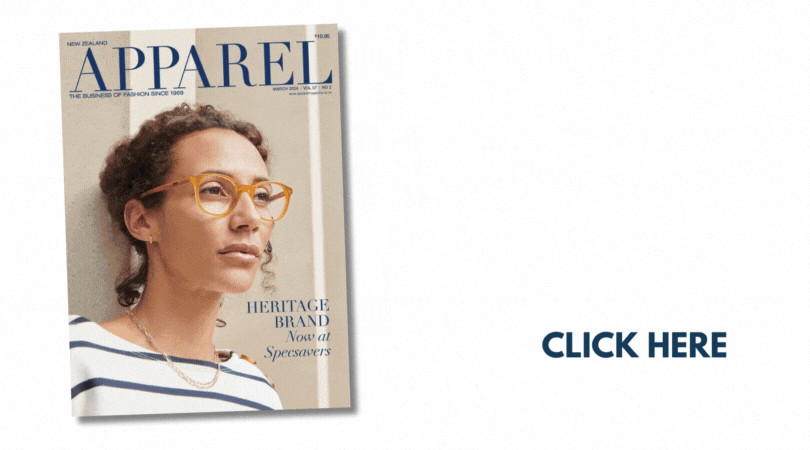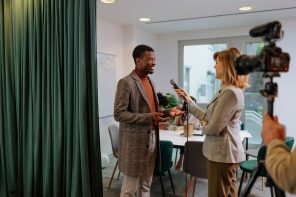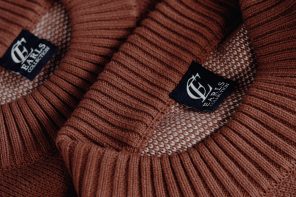Collette Dinnigan is an iconic Australian designer, with shows at Paris Fashion Week and a chain of her own stores under her belt. Having put all that on hold approximately five years ago, Dinnigan scaled back her own brand and worked on a variety of creative projects with different partners - the most recent of which is her collaboration with Specsavers. Dinnigan has designed a collection of eyewear for young girls, drawing inspiration from a source close to her heart. “My daughter, who is 13, has been wearing glasses for the last three years,” said Dinnigan. Young girls often have no options but Disney-brand frames or to buy frames from the adult collection. “The problem with young girls buying glasses from the adult collections are their petite faces, which are often too small for the frames,” explained Dinnigan. The solution was clear; a collection which was fun and bold, but not too grown-up, which would make girls feel excited about wearing their glasses and showing their personality.
Collaborations are increasing in the fashion industry, and Dinnigan is an expert at ensuring she works with the right brands. “I find collaborative collections really exciting. I always make sure they can produce good quality products ethically,” added Dinnigan. Working with a large company meant Dinnigan could achieve economies of scale, due to the size of Specsavers’ production runs. This ability means Dinnigan could create a beautiful collection with high-quality materials, while still passing savings onto the consumers. Being able to offer a well-designed, well-made product at a good price is a win-win for the company, designer and customer. In eyewear, the price point is vital as the products are part of the consumer’s health, and an essential purchase. Having said that, collaborations are not always smooth sailing. “There’s nothing more frustrating than companies who don’t use designers,” said Dinnigan. “Or companies who have a mixture of departments who all sign things off, but work on different schedules.” Designing and managing her own brand came with its own unique challenges - namely managing people and being reliant on fabric manufacturers. “In fashion, everything hinges on fabric manufacturers and merchants, and they can hold up the rest of the process.” In an industry with so many components — sales, design, manufacture, delivery — being let down by a third party can be the ultimate frustration. But what about the technical differences between fashion and eyewear? According to Dinnigan, the principles are very much the same, although eyewear is, understandably, more technical. Both are also steeped with emotion for purchasers. Body shapes, proportions, colours, and trends are the basis of clothing purchases. Whereas eyewear makes an instant statement about the wearer, so consumers need to decide what they want to convey. “Eyewear is about emotional feelings, do you want to feel noticed? Or do you want to dissolve into the wall? Do you want something special for after dark?” Face shape is also a factor which is very personal for eyewear purchasers. Eyewear design has fundamentally changed, noted Dinnigan, as the optics industry has become more trend based. “People are starting to experiment with eyewear and are not just looking for something practical,” explained Dinnigan. “The clear acetate frames which are on-trend at the moment are a great example of an optics trend.” As for kidswear, Dinnigan has been more drawn to the area since becoming a mother and has discovered therein a level of freedom not offered in womenswear. Bright colours and loud patterns draw children in, - they don’t want to wear clothes that are tonal. There is no worry that an item might not sell because it is too bold, which means the design process can be much more carefree and fun.
Across her already expansive career, Dinnigan has experienced the industry in its entirety. Despite that, her unequalled career highlight is travel. “I love travelling with a purpose, not just for a holiday,” she explained. “It’s amazing meeting artisans from all over the world.” Whether it is the seamstresses who crafted garments for her brand or the retail assistants who sold her clothes, Dinnigan’s creativity was her ticket to meet people from all over the world. Even though it has only been five years since she closed up shop on her clothing line, Dinnigan has noticed changes within the industry occurring in the interim. When launching the eponymous brand, Dinnigan felt that using your own name was a good way of identifying yourself, and letting your personality shine through the brand and designs. “The media is very different now to when I started, there is a rush with social media and online, and everyone wants to know more,” Dinnigan noted. While consumer media used to focus primarily on the designs and clothing, Dinnigan now feels that there is a constant push for content, a focus on being backstage and more emphasis on personal aspects. Always protective of her family, Dinnigan now tries to keep the brand image and her own life separate.
As for the future of her own label, even as recently as the start of 2017 Dinnigan would have said she had no plans for re-launching the Collette Dinnigan clothing label, but now she isn’t so sure. After a busy year designing for Specsavers and guest editing Vogue Living, Dinnigan has had ample creative outlets presented in small, manageable chunks. A return to the life at the helm of her own brand empire would be a significant change in pace, but unable to give a solid answer either way, perhaps there might be more Paris Fashion Week runway shows in the future for Dinnigan.






